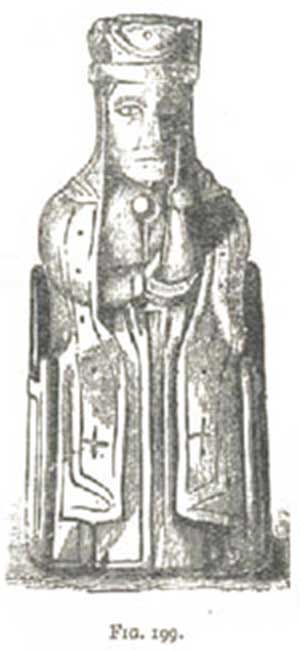Chess Games in Ancient Ireland
From A Smaller Social History of Ancient Ireland 1906
« previous page | contents | start of chapter | next page »
CHAPTER XXV....continued
8. Chess.
In ancient Ireland chess-playing was a favourite pastime among the higher classes. Everywhere in the Romantic Tales we read of kings and chiefs amusing themselves with chess; and to be a good player was considered a necessary accomplishment of every man of high position. At banquets and all other festive gatherings this was sure to be one of the leading features of the entertainrnent. In every chief's house there was accordingly at least one set of chess appliances for the use of the family and guests: and chess-boards were sometimes given as part of the tributes to kings.
The chessboard, which was divided into black and white squares, was called fitchell [fihel], and this name was also applied to the game itself. The chessmen, when not in use, were kept in a fer-bolg or 'man-bag,' which was sometimes of brass or bronze wire woven, The chiefs took great delight in ornamenting their chessboards and men richly and elaborately with the precious metals and gems. The men were distinguished half and half, in some obvious way, to catch the eyes of the two players. Sometimes they were black and white. Many ancient chessmen have been found in bogs, in Lewis and other parts of Scotland: but so far as I know we have only a single specimen belonging to Ireland, which was found about 1817 in a bog in Meath, and which is now in the National Museum, Dublin.
FIG. 199. Bone Chessman, King: found in a bog in Meath about 1817. Drawn by Petrie.
I have headed this short section with the name "Chess," and have all through translated fitchell by 'chess,' in accordance with the usage of O'Donovan, O'Curry, and Petrie. Dr. Whitley Stokes, on the other hand, uniformly renders it 'draughts.' But, so far as I am aware, there is no internal evidence in Irish literature sufficient to determine with certainty whether the game of fitchell was chess or draughts: for the descriptions would apply equally to both.

